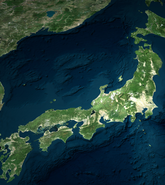NEWARK, CA – July 18, 2019 – RMS®, a leading global risk modeling and analytics firm, has estimated that the insured U.S. losses from Hurricane Barry will not exceed $500 million. This estimate represents insured losses associated with wind, storm surge, and inland flood damage, including losses to the National Flood Insurance Program (NFIP).
“Wind and storm surge-driven losses for Barry are expected to be in line with losses projected prior to landfall. The storm made landfall in Louisiana as a weak Category 1 hurricane, then quickly weakened due to its vulnerable structure. Sustained hurricane-force winds were only experienced along a small portion of the southern Louisiana coastline,” said Jeff Waters, senior product manager of the RMS North Atlantic Hurricane Models.
Holly Widen, product manager, Global Climate, RMS, said: “Although, at first, Barry did not seem to generate the forecasted severe rainfall, it ended up producing more than 23 inches in southwest Louisiana and 13 to 14 inches in portions of Mississippi and Arkansas; the latter of which is now the fifth state to set a new tropical storm rainfall record in the past two years. The heavy rainfall resulted in flooding across portions of the lower Mississippi Valley, albeit in less populated areas. Thus, flood-driven losses are now expected to be lower than initially anticipated.”
The RMS U.S. Inland Flood High Definition (HD) Model utilized observed rainfall accumulations for Barry to simulate the runoff, river discharge, and consequent flood inundation across the impacted region.
Included in this estimate are insured losses from property damage and business interruption from wind, storm surge-driven coastal flooding, together with inland flooding to residential, commercial, industrial, and automobile lines of business. Storm surge losses include the impact of coverage leakage, an escalation in claims severity for wind-only policies in instances where wind and water hazards co-exist for residential lines of business.
RMS expects losses to the NFIP to represent approximately half of the total insured loss estimate. Louisiana has the third highest number of NFIP policies-in-force in the U.S., many of which cover areas impacted by storm surge or inland flooding from Barry.
Hurricane Barry was the second named storm of the 2019 North Atlantic hurricane season. It made landfall on Saturday, July 13 near Intercoastal City, Louisiana as a Category 1 hurricane on the Saffir-Simpson Hurricane Wind Scale with maximum sustained winds of 75 mph (120 km/hr). Barry was the first hurricane to make landfall in Louisiana since Hurricane Nate in 2017.
ENDS
RMS Disclaimer
The technology and data used in providing this Information is based on the scientific data, mathematical and empirical models, and encoded experience of scientists and specialists. As with any model of physical systems, particularly those with low frequencies of occurrence and potentially high severity outcomes, the actual losses from catastrophic events may differ from the results of simulation analyses. RMS SPECIFICALLY DISCLAIMS ANY AND ALL RESPONSIBILITIES, OBLIGATIONS AND LIABILITY WITH RESPECT TO ANY DECISIONS OR ADVICE MADE OR GIVEN AS A RESULT OF THE INFORMATION OR USE THEREOF, INCLUDING ALL WARRANTIES, WHETHER EXPRESS OR IMPLIED, INCLUDING BUT NOT LIMITED TO, WARRANTIES OF NON-INFRINGEMENT, MERCHANTABILITY AND FITNESS FOR A PARTICULAR PURPOSE. IN NO EVENT SHALL RMS (OR ITS PARENT, SUBSIDIARY, OR OTHER AFFILIATED COMPANIES) BE LIABLE FOR DIRECT, INDIRECT, SPECIAL, INCIDENTAL, OR CONSEQUENTIAL DAMAGES WITH RESPECT TO ANY DECISIONS OR ADVICE MADE OR GIVEN AS A RESULT OF THE CONTENTS OF THIS INFORMATION OR USE THEREOF.






